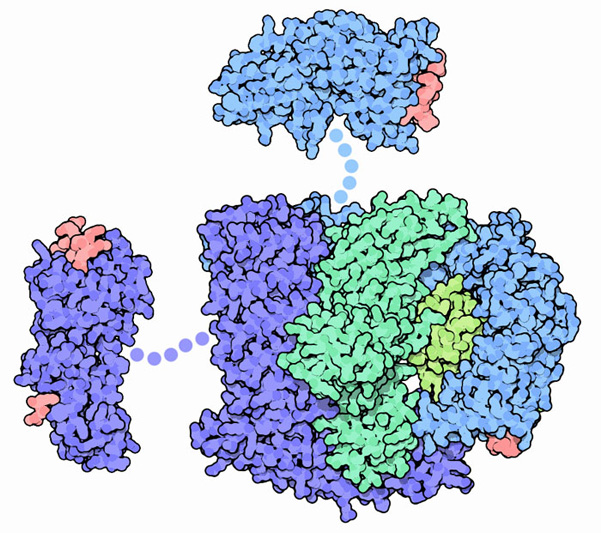|
Inhaltsübersicht | Nanomaschinen | Moleküle | Programme | Kurse | Fun | Links |
||
| > |
Clathrin

Special Delivery
Clathrin doesn't bind directly to a membrane to form vesicles, instead, it binds to adaptor proteins that recognize molecules on a membrane surface. At least 20 different clathrin adaptors have been identified, each recognizing and binding to membrane proteins and phospholipids that are unique to a particular organelle. In this way, the adaptors play a central role in assisting particular membrane components into a vesicle when it buds. For instance, the adaptor protein shown here, AP-2 (PDB entry 1gw5), binds weakly to a breed of phospholipids in the plasma membrane (the small molecule in red at lower right is part of one of these lipids). Once attached to the membrane, AP-2 changes shape and gains a voracious affinity for any transmembrane protein that dangles a cytoplasmic tail with a special AP-2-specific amino-acid sequence. AP-2 also binds to the feet of each triskelion, assembling the clathin coat on a membrane surface, and it binds to accessory proteins that assist with cage formation or disassembly. The two appendages, shown here connected at the top (PDB entry1ky7) and the left (PDB entry 2g30), bind to special amino acid sequences on these proteins.Next: Exploring the Structure
Previous: Clathrin
Last changed by: A.Honegger,